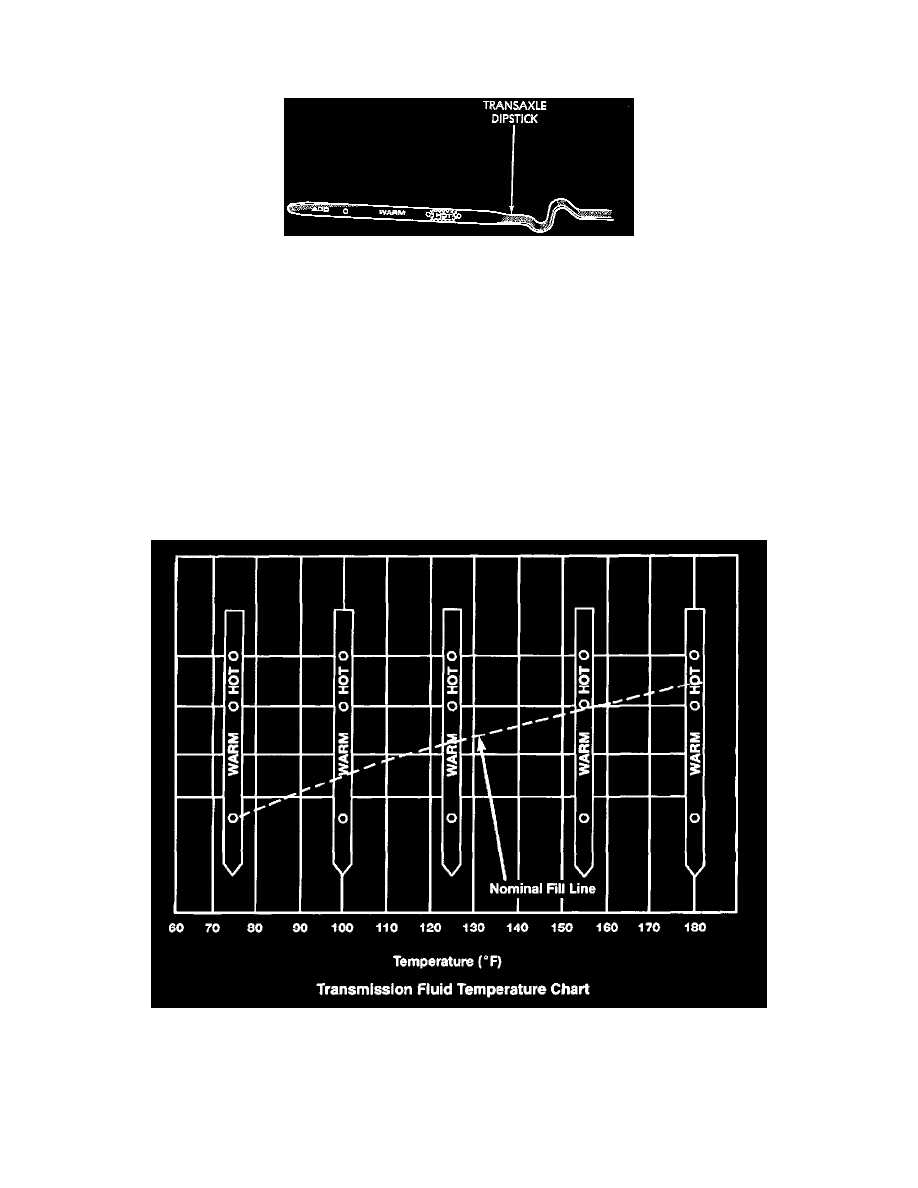Intrepid V6-201 3.3L (1995)

Fluid - A/T: Service and Repair
Fluid and Filter Change (Transmission Sump)
NOTE: Only fluids of the type labeled MOPAR ATF+4 (Automatic Transmission fluid) Type 9602 should be used. A filter change should be made at
the time of the oil change. The magnet (on the inside of the oil pan) should also be cleaned with a clean, dry cloth.
NOTE: If the transaxle is disassembled for any reason, the fluid and filter should be changed.
1. Raise vehicle on a hoist. Place a drain container with a large opening, under transaxle oil pan.
2. Loosen pan bolts and tap the pan at one corner to break it loose allowing fluid to drain, then remove the oil pan.
3. Install a new filter and O-ring on bottom of the valve body and tighten retaining screws to 5 Nm (40 inch lbs.).
4. Clean the oil pan and magnet. Reinstall pan using new MOPAR Silicone Adhesive sealant. Tighten oil pan bolts to 19 Nm (165 inch lbs.).
5. Pour four quarts of MOPAR ATF+4 (Automatic Transmission Fluid) Type 9602 through the dipstick opening.
6. Start engine and allow to idle for at least one minute. Then, with parking and service brakes applied, move selector lever momentarily to each
position, ending in the park or neutral position.
7. Add sufficient fluid to bring the level 1/4 inch above the bottom hole of the dipstick. Room temperature oil (70°F.) set at this level will expand
(when heated to 180°F.) to a level within the hot range.
8. Recheck the fluid level after the transaxle has reached normal operating temperature (180°F.).
9. To prevent dirt from entering transaxle, make certain that dipstick is full seated into the dipstick opening.
NOTE: Engine and Transaxle should be at normal operating temperature before performing this procedure.
FLUID LEVEL CHECK USING DRB
1. Start engine and apply parking brake.
2. Hook up DRB III scan tool and select transmission.
3. Select sensors.
4. Read the transmission temperature value.
